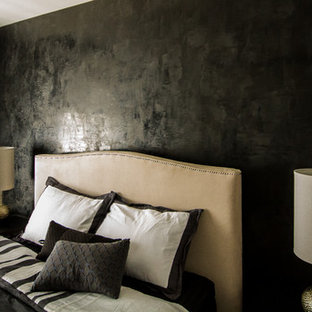

- #BLACK VENETIAN PLASTER WALLS UPDATE#
- #BLACK VENETIAN PLASTER WALLS REGISTRATION#
- #BLACK VENETIAN PLASTER WALLS PASSWORD#
- #BLACK VENETIAN PLASTER WALLS OFFLINE#
- #BLACK VENETIAN PLASTER WALLS DOWNLOAD#
Save your material as a single library, give it the same name.dark grey concrete, fine red leather, brushed steel) Save your render with a suitable name that represents your material (e.g.Render the image with the preset settings.Adjust the material if necessary (for lighting and stuff).Load the scene and apply your material to the sample object.
#BLACK VENETIAN PLASTER WALLS DOWNLOAD#
Download our Sample scene for Vray and 3DSMax here sample scene. If you want to contribute to this site too just follow these simple steps: Them to our site to help and inspire others. People from around the world put there knowledge and love into their materials and uploaded This site wouldn't be such a great vray material resource without the help of our community! We encrypted the passwords in md5 + and Upload #BLACK VENETIAN PLASTER WALLS PASSWORD#
He sent me the whole dump - email, password hashed and in clear text.
09:30: I opened an E-Mail about a potential data breach, including samples (email and hashed passwords), got in contact with the sender to proof the data. #BLACK VENETIAN PLASTER WALLS OFFLINE#
10:05: Website has been taken offline to prevent further access.10:17: Changing SSH- and Database passwords again (134bits, as usual).11:35: Reporting to the local data protection authority ().19:00: Still analysing the data, comparing users and timestamps, also hoster prepared the e-mail server for sending out the information mail.Information-Mail goes out to all records from the dump, soon.
#BLACK VENETIAN PLASTER WALLS REGISTRATION#
Last email entry has "" as registration date.
02:00: The dump contained only "email:password" (some are hashed and some are dehashed only) but not in chronological order so we had to rearange the records first while mapping them to the affected database. 08:00: Start sending out mails to all addresses contained in the leak. 10:32: Our hoster scanned our site but found no known security hole. Getting A LOT of bounces back, but also kind replies. We will bring back all the materials as before for free, but the community features and personal data wont come back. Between the bounces we receive also some very kind replies. 10:15: All mails to the records we found in the breached data were sent out. 12:50: Got also in contact with cybercrime law enforcement. 16:30: Redirecting the traffic to our new page. Want to contribute to our site, please check out the upload page: Upload a new material #BLACK VENETIAN PLASTER WALLS UPDATE#
We know you all have been waiting for the update so thank your for your patience.Īs you know we took down all personal data and are running the site completly static without any database and stuff but if you still If you are doing small patch-work, use a smaller bucket and mix by hand so that the plaster will set slower and give you time to work.Happy new year folks. Use the attachment for large jobs, where you will apply a lot of plaster in a short amount of time. You must know that mixing the plaster with an attachment on your drill will cause the plaster to set much faster.
An electric drill with a paddle attachment can save you a lot of time if you're mixing up large or multiple batches. Stir the mixture as you add in the plaster. If you add water to the plaster, you will have to apply pressure to mix the plaster at the bottom of the pail and you will over-mix the plaster and it will set too fast to work with. Always add the plaster mix to the water, not the other way around. Then, use a plunger or stirring rod to begin incorporating the dry plaster particles. Open a new bag of plaster mix and shake it into the bucket until it forms a mound above the surface of the water. Fill the bucket to the halfway mark with cool, clean water. Mix your plaster in a 5 or 7 gallon (18.9 or 26.5 L) (19-26L) bucket. Also a wall that is too dry causes the water to be absorbed out of the plaster and set before it has time to stick to the wall. 
Dust, soap, oil, tar and mold all cause the plaster not to adhere to the surface.
You should always begin by cleaning your work surface, whether you’re resurfacing an old wall or plastering over brand new lath. Spraying the wall with water will help the new plaster to adhere to the old wall. If it comes away caked with dust, it still needs some work.  To test whether the wall is ready to accept new plaster, run your finger over the surface. Otherwise, there may be bumps and indentations on the finished wall. Make sure the wall and ceilings are plumb and flush before you start plastering. Repair any cracks in the wall before plastering it. Prime over stained areas to ensure the plaster will adhere properly.
To test whether the wall is ready to accept new plaster, run your finger over the surface. Otherwise, there may be bumps and indentations on the finished wall. Make sure the wall and ceilings are plumb and flush before you start plastering. Repair any cracks in the wall before plastering it. Prime over stained areas to ensure the plaster will adhere properly. 
When you’re done, wipe the wall with a damp cloth to pick up what you loosened with the brush. Pay particular attention to the areas with heavy buildup, or where stripped layers of old plaster have left behind clumps. Scrub the wall from top to bottom with a dry stiff-bristled brush. Clean the wall to remove dust and debris.








 0 kommentar(er)
0 kommentar(er)
